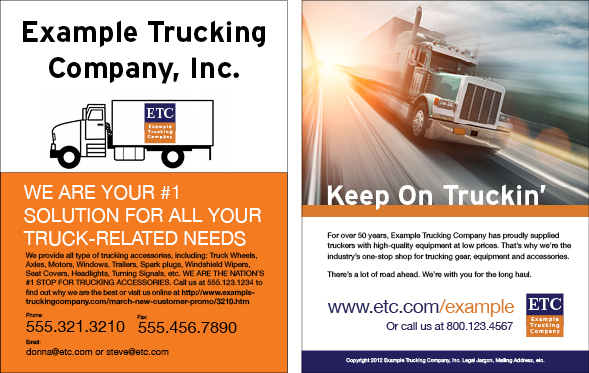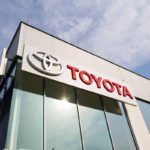Take a look at these two print ads. Notice a difference?

The first ad looks like it was produced in-house. Not very professional and probably not very effective. The second ad was also produced in-house, but it looks much more professional because three simple ad principles were followed.
Here are three steps to producing a professional looking print ad in-house:
- High Quality Image
Flip through an issue of IJ magazine. Which ads catch your eye? Chances are they have a nice image (like this one by Travelers or this one by Applied Underwriters, both of which happen to be winners in our Recall & Readership Study). A high-quality image goes a long way to making your ad look professional.Unless you’ve got an expensive camera, lighting equipment and are a professional photographer, don’t take the photo yourself. There are some great stock photo sites where you can grab a proper image for just a few bucks. Personally, I like www.bigstockphoto.com.
Note: It’s important to get a high-resolution image. For Insurance Journal magazine, your image will need to have a resolution of 300ppi (pixels per inch). In other words, if the image will be 4 inches wide by 5 inches tall on the magazine page, you’ll want the original digital image to be 1200 pixels wide by 1500 pixels tall. With less pixels, the image may appear blurry.
- Catchy Headline with Minimal Copy
Once you’ve caught the reader’s attention with a quality image, hook them with a sharp headline and reel them in with a line or two of copy. (“Copy” is marketing lingo for the body of text in your ad.)Depending on your strategy, a good headline might be key characteristics of your company (“Integrity. Quality. Commitment.”). Or it could be a benefit statement (“Increase Your Business by 200%”). Or it could be a relevant cliché (“Keep On Truckin”). In my opinion, the best headline is a punchline to the image. Notice how these headlines connect the image to the concept of the ad: Demotech Inc., UCA General Insurance Services, Inc., and Ace Group.
As for the copy, don’t write too much. Rather than include 10,000 words all about every aspect of your business, focus in on a key message and deliver it concisely. It’s more likely that readers will actually read your ad if the message is short.
- Easy Call to Action
Last but not least, you’ll want to give the reader a next step to take – a call to action. Your website address and phone number is a good call to action, but it’s important to make it as simple and easy to remember as possible. Nobody is going to type in a crazy long website address like www.insurancejournal.com/blog/derence/example-of-a-really-long-url/12345.php, so get your IT guy to make a shorter URL that automatically redirects. (If you don’t have an IT guy, try a URL shortener like http://goo.gl.)
Now, if you have the budget for it, you should probably just hire a professional. A trained graphic designer at an ad agency will be better able to produce a beautiful and effective print ad. However, if you’re a marketer looking to stay in-house, these three principles will help make your print ad look professional.
Was this article valuable?
Here are more articles you may enjoy.


 Pet Insurance, Agents Gets a Shorter Leash Under Bill DeSantis Signed Into Law
Pet Insurance, Agents Gets a Shorter Leash Under Bill DeSantis Signed Into Law  Insurance Groups Celebrate Signing of Georgia Tort Reform Laws
Insurance Groups Celebrate Signing of Georgia Tort Reform Laws  Class Action Accuses Toyota of Illegally Sharing Drivers’ Data With Progressive
Class Action Accuses Toyota of Illegally Sharing Drivers’ Data With Progressive  Group Sues California Department of Insurance Over FAIR Plan Surcharges
Group Sues California Department of Insurance Over FAIR Plan Surcharges 


